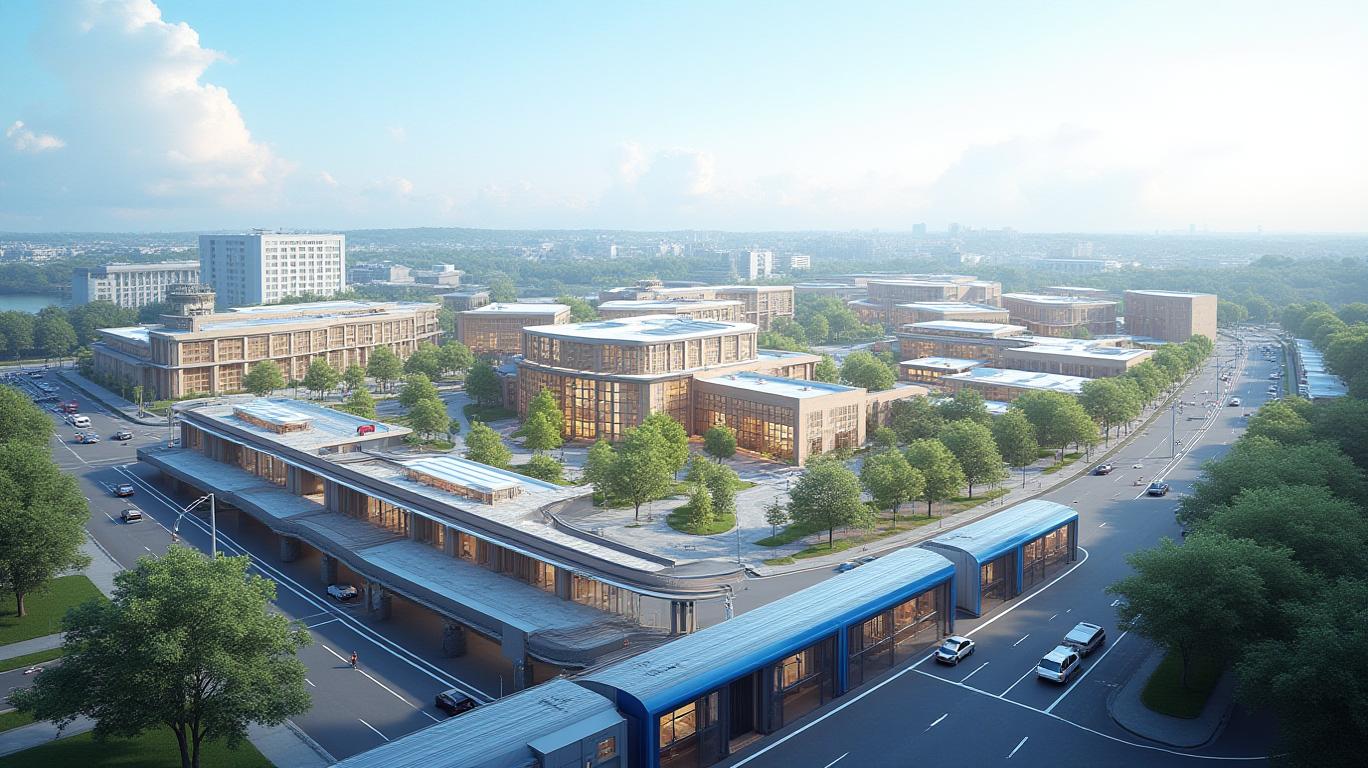Alexandria Real Estate's Q1 Results Signal Challenges Ahead for Life Science REITs
Alexandria Real Estate Equities (NYSE: ARE), the dominant player in life science real estate, reported mixed results for its first quarter of 2025, highlighting persistent headwinds in the sector. While adjusted funds from operations (FFO) narrowly beat estimates, revenue dipped year-over-year, and the company slashed its full-year guidance—a stark reminder of the industry’s evolving challenges.
Q1 Financials: A Fragile Balance
ARE’s Q1 FFO came in at $2.30 per share, slightly below the $2.35 per share in Q1 2024 but exceeding the $2.28 consensus estimate. Revenue fell 1.4% to $758.2 million, though this figure edged past both the $749.5 million and $756.4 million estimates from analysts. However, the net loss of $11.6 million—versus a net income of $0.97 per share a year earlier—highlighted the volatility of non-core metrics for real estate investment trusts (REITs).
The company’s focus on its Megacampus™ ecosystems, which integrate life science facilities with academic and corporate partners, remains central to its strategy.  . This model has positioned ARE as a leader in innovation clusters like Boston and the San Francisco Bay Area. Yet operational execution is now under scrutiny.
. This model has positioned ARE as a leader in innovation clusters like Boston and the San Francisco Bay Area. Yet operational execution is now under scrutiny.
Guidance Cuts Reflect Sector-Wide Pain
ARE revised its full-year 2025 guidance downward across key metrics:
- Adjusted FFO (AFFO) per share: Reduced to $9.16–$9.36, below the prior $9.23–$9.43 range and the $9.29 analyst estimate.
- FFO per share: Trimmed to $8.51–$8.73, down from $9.23–$9.43, citing “slower than anticipated re-leasing” and delays in filling vacancies.
- EPS: Cut to $1.36–$1.56, a sharp drop from $2.57–$2.77, reflecting the challenges of translating occupancy rates into net income.
The revised outlook underscores a critical issue: rising vacancies in life science spaces amid slower biotech funding and shifting corporate real estate priorities. ARE’s portfolio, though geographically concentrated in high-demand markets, faces pressure as companies optimize space usage or delay expansion plans.
The stock’s 21% year-to-date decline, with a 34% drop from its 12-month high, reflects investor skepticism. Analysts remain divided: 5 “Buy” ratings and 9 “Hold” signals suggest a wait-and-see attitude.
What’s at Stake for ARE’s Future?
ARE’s fate hinges on two factors: its ability to re-lease expiring leases and its development pipeline. The company noted that slower re-leasing contributed to the guidance cuts, but its $3.2 billion in development projects—targeting biotech, pharmaceutical, and academic partnerships—could provide long-term stability.
Competitors like LabTech and BioMed Realty are also grappling with similar sector-wide trends, but ARE’s scale and brand equity give it an edge. The company’s Q1 occupancy rate of 92% (down from 94% in 2023) remains robust, but the pace of lease renewals has slowed.
Conclusion: Caution, but Not Surrender
ARE’s Q1 results and revised guidance paint a nuanced picture. While the company’s leadership in life science real estate remains unchallenged, execution risks have risen. The stock’s decline creates a valuation inflection point: At $76.92, ARE trades at 8.3x its revised 2025 AFFO midpoint of $9.26, a discount to its 10x multiple in early 2024.
Investors must weigh the sector’s long-term growth potential—driven by biotech innovation and aging populations—against near-term leasing delays. With 5 “Buy” ratings and no “Sell” calls, the market isn’t abandoning ARE, but patience will be required. For those willing to bet on ARE’s Megacampus model weathering the storm, the shares may offer a compelling entry. For others, the risks of further guidance cuts loom large.
In the end, Alexandria Real Estate’s story is far from over. Its ability to navigate the life science cycle’s ups and downs will determine whether this quarter’s stumble becomes a stumble or a stumble into a new reality.










